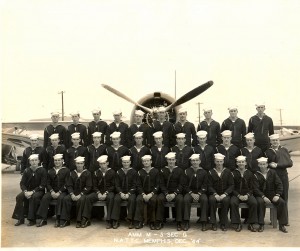Technology Trends for 2012
Last month, I was able to attend a technology briefing conducted by the Chief technology Officer at Deloitte. Toward the end of each year, Deloitte publishes their view of trends that will help shape technology in the coming year. These trends come in two varieties – disruptions and enablers.
Disruptions:
- Social Business:
Applying social technologies on social networks, amplified by social media, to fundamentally reshape how business gets done. - Gamification:
Game mechanics, game theory, and serious gaming are being infused into day-to-day business processes to drive passion and performance. - User Empowerment:
Users demand intuitive, user-friendly, purpose-built solutions, and won’t hesitate to go around central IT to get them. - Enterprise Mobility:
Mobility’s potential is starting to be realized, but making mobile offerings secure, reliable and maintainable is still a development challenge. - Hyper-Hybrid Cloud:
Organizations face a hyper-hybrid reality – multiple cloud solutions integrating back into the enterprise.
Enablers:
- Geo-spatial Visualization
Creating visual, interactive, location-based models of large, complex, high cardinality data can jump-start analytics value. - Digital Identities
Context-rich, non- repudiable digital identities are paving the way for new products and services – across companies, industries, and geographies. - Big Data Goes to Work
Businesses harness exploding data volumes and the deluge of unstructured information to find undiscovered insights. - Measured Innovation
Innovation can be industrialized, but it requires deliberate structure, mechanics, and culture. - Outside-in Architecture
Businesses change their mindset and look outside of the organization for advantage.
You can envision all of these having some impact on NARA over time. Actually, some are already impacting us. And, some in particular are clearly in our sights as we develop strategies for meeting our mission as more and more information is born digital, or is converted to a digital form for quick and easy access.
More and more Federal applications are moving to cloud computing and cloud storage to replace dedicated data centers. Agencies will eventually use multiple cloud services to develop records, and at some point will be looking for easy methods to manage these records. NARA is in a unique position to help lead the architecture of these Hyper-Hybrid Clouds to best support effective electronic records management processes.
NARA is all about Big Data. Agency electronic data sets continue to grow in size, making the management of these Big Data more and more difficult. To demonstrate this, we recently had to develop a way to effectively (cost and time) move less than 20 terabytes (TB) of 1940 Census data to our hosting partner. Let’s face it, in today’s world of Big Data, 20 TB is not all that big – the big box stores sell 2 TBs storage systems for less than $200. Finding a storage device to hold the data was not the issue — moving the data was the real problem. It took us about a week to move this data set across a dedicated high-speed connection. Moving this data across today’s Internet could take several months!
To make things even more exciting, larger datasets are coming. In 2011, we received over 300 TBs of 2010 Census data…on a truck, the only conceivable way to quickly move a large amount of data between 2 agencies. This approach is working now, but it certainly isn’t scalable.
NARA is in a unique position to lead efforts to develop Big Data solutions across the Federal Government. It may be that the best way to address this problem of moving data is to actually not move it at all. Instead, a solution to Big Data could involve Outside-in Architectures, utilizing agency cloud solutions and an adoption of a Hyper-Hybrid Cloud approach, linking these Federal clouds into a networked storage environment. In this hypothetical approach, these data sets could be effectively utilized and managed, either by the creating agency or a service agency, like NARA, allowing it to remain in the cloud environment where it was originally created.
But, in order to make this work, important preservation and records management information (metadata) must be captured throughout the data lifecycle. Combining NARA’s expertise in managing records, our understanding of required metadata, and a cloud-based network of data storage, positions us to confidently manage these data sets throughout their lifecycle without physically moving the data. This is a big idea, requiring careful coordination among Federal agencies and good execution of data management practices. But, in today’s constrained budget environment, we need to think differently to effectively manage the records of our government.
These 2012 technology trends may not be completely accurate, but certainly paint a clear picture of the potential disruptions and enablers that we will experience. Fortunately, our strategies have already anticipated some of these and position NARA in a great leadership position.


